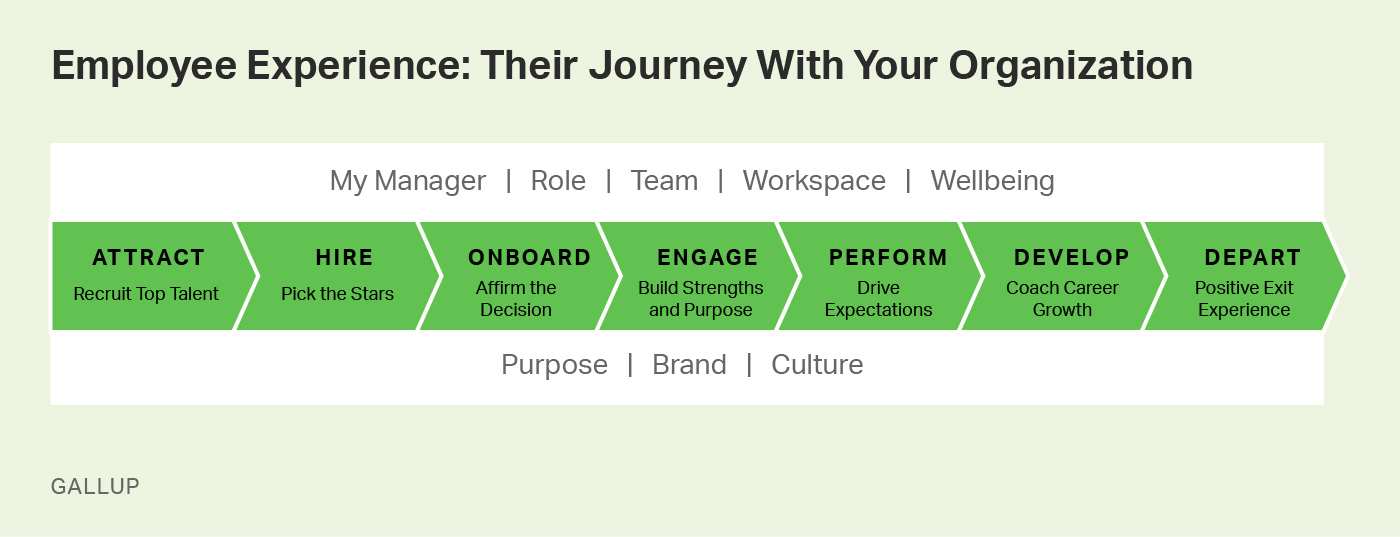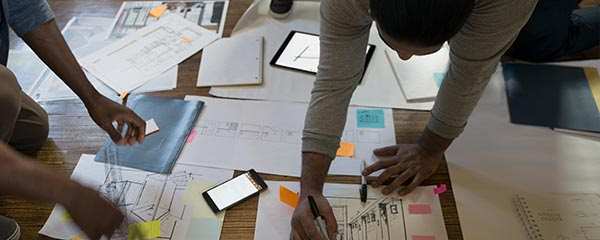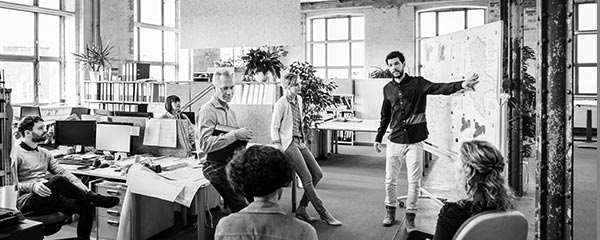Story Highlights
- Organizational agility is in short supply
- HR should quicken its adoption of agile practices
- The employee experience is ripe for HR-led agile transformation
"It's time to blow up HR and build something new."
While this headline from the July/August 2015 edition of the Harvard Business Review was met with disapproval, anger and mild contempt from the HR community at large, the article's message was straightforward. In short, HR needs to get with the times and be more user-centric, accountable, and oriented toward business outcomes.
Fast forward to 2019, and our new expectation for HR: Be agile.
Agility -- a concept that originated in software development -- is now being used (and perhaps misused) for all manner of concepts, systems and processes in the business world. At Gallup, we measure workplace agility by asking workers for their level of agreement with two general statements about their organizations:
- In my company, we have the right mindset to respond quickly to business needs.
- In my company, we have the right tools and processes to respond quickly to business needs.
We find that real organizational agility is in awfully short supply. Gallup's recent research in the U.S. shows that few employees feel that their organization is agile (and, alarmingly, those few employees are far more likely than everyone else to think their company is ahead of its competitors and feel confident in the organization's financial future).
HR doesn't have to blow itself up to move faster, though. What HR should do is what HR does best.
When it comes to HR, our work with clients shows that quite a few organizations are following an "agile lite" process -- slowly but surely transforming the HR organization from the inside out. They're improving HR processes, driving greater efficiencies, and picking up the pace in tasks and work activities where HR is generally considered slow.
And that's good. But it's not fast enough, not in this increasingly VUCA (Volatile, Uncertain, Complex and Ambiguous) world.
HR doesn't have to blow itself up to move faster, though. What HR should do is what HR does best -- but orient those core competencies toward the employee experience and agility.
How to create an agile employee experience.
Agility is about putting the customer at the center of design and co-creating solutions based on customer input. HR can replicate this process for employees because -- as HR well knows -- the employee experience needs mapping, analysis and optimization just as much as the customer experience does.
Then, with the addition of principles from design thinking, a human-centered problem-solving method that involves creativity, experimentation and empathy -- HR can use the data gleaned from employees just as scrum teams do for customers.
Take, for example, the annual employee performance review -- a critical element of the employee experience. Research, however, shows it is also one of the least effective aspects of the employee experience. Studies have suggested that managers spend 17 hours per employee just preparing for a performance review. And yet, according to Gallup analytics, only 20% of employees strongly agree that their company's performance review system motivates them and fewer still, 14%, say their manager's feedback inspires them to improve.
Meanwhile, the future of work is being shaped by extraordinary changes in technology, globalization and overwhelming information flow. Workers, particularly millennials, are asking for something different. They want a coach, not a boss. They want clear expectations, accountability, a rich purpose, and they especially want ongoing feedback and coaching. With that outlook and using principles like design thinking, HR can use the data gleaned from employees just as scrum teams do for customers - and help recraft or reimagine critical pathways on the employee experience.

To gain the right analytics, HR must add focused listening posts at various stages -- from talent attraction, selection and onboarding through to performance development and departure -- and HR can obtain even richer data that will accelerate agility. A more agile and effective review process would, therefore, be individualized to the employee's strengths and ambitions, based on objective employee and business metrics.
This process would be oriented toward the employee and the organization's future needs, informed by the company's current talent pipeline and market demands. All of it should be part of an HR-directed performance development program that shifts managers from bosses to coaches.
HR should be involved in tech selection and implementation.
Technology platforms are becoming an increasingly integral part of the employee experience. The last decade has seen companies double down on tech, processes, and systems in every area, and rightfully so. Agility requires considerable investments in technology and process improvement. But an agile approach to the employee experience requires significant culture change, not a systems change alone. HR can lead the charge by asking just how employee-centric these technological innovations are.
Gallup's recent research reveals that only 17% of U.S. employees agree that their company readily implements new technologies that help them be more productive. Additionally, only 13% feel that in their company they are always looking for the simplest way to get the job done, and only 14% feel satisfied with the speed of decision-making at work.
An agile approach to the employee experience requires a culture change, not a systems change. HR can lead the charge by asking just how employee-centric these technological innovations are.
First-rate technology comes with significant ramp-up time and several teething issues. The employee experience is marred by significant disruptions to current work and a fair amount of frustration.
Whether the majority of companies aren't buying what they need or aren't using what they buy, most employees aren't benefitting from the technology and processes that were intended to improve their workplace experience.
HR should become deeply involved in technology selection and implementation. With its data-rich resources and expertise in learning, HR is well-positioned to identify lapses in productivity, identify tech that could make teams and individuals more agile and more collaborative, and teach workers how to use the tech with less resistance and more enthusiasm. A better, faster tech adoption process would improve the employee experience and the agile agenda as well.
Managers must be set up for success to deliver an agile employee experience.
A real cultural shift toward organizational agility is not possible without a focus on mindset. Managers play a big part in that -- managers account for 70% of the variance in employee engagement -- and shouldn't be overlooked. However, managers will need help adapting to a changing workplace. They must be taught techniques to help employees navigate the employee experience while providing consistent, real-time feedback and coaching on the fly.
There is a clear business case for this. Gallup analytics show that managers trained to engage and coach employees realize a return of $1,812 per employee in the first year.
To realize this benefit, organizations must make things easier for managers. Gallup latest research on the manager experience shows that 42% of managers surveyed feel they have multiple competing priorities, and 30% feel they have a lot of interruptions in their work. These are hardly the hallmarks of an agile environment.
So, the role that HR will play in realizing significant business outcomes is going to be vital. And driving a better, more agile approach through the organization will demand an HR department that reinforces the organization's commitment to agile while refusing to drain managers' resources, energy and focus.
For HR to turn its core competencies agile, it can't simply replace an HR system with something newer, snazzier and higher-tech. That's just the same old experience with a different spin.
HR must re-engineer some of their established norms to support the agile mindset and processes. Fortunately, HR knows how to do the employee experience right and improving human systems and processes should be what HR does best.
So no, HR doesn't have to blow itself up. It just needs to give itself the benefit of its own expertise.
Gallup can help you craft an agile workplace culture:
- Download our approach to workplace culture perspective paper.
- Learn how we can partner with you to create a culture of agility across your organization.
- Discover the importance of managers in creating an agile workplace with It's the Manager.





